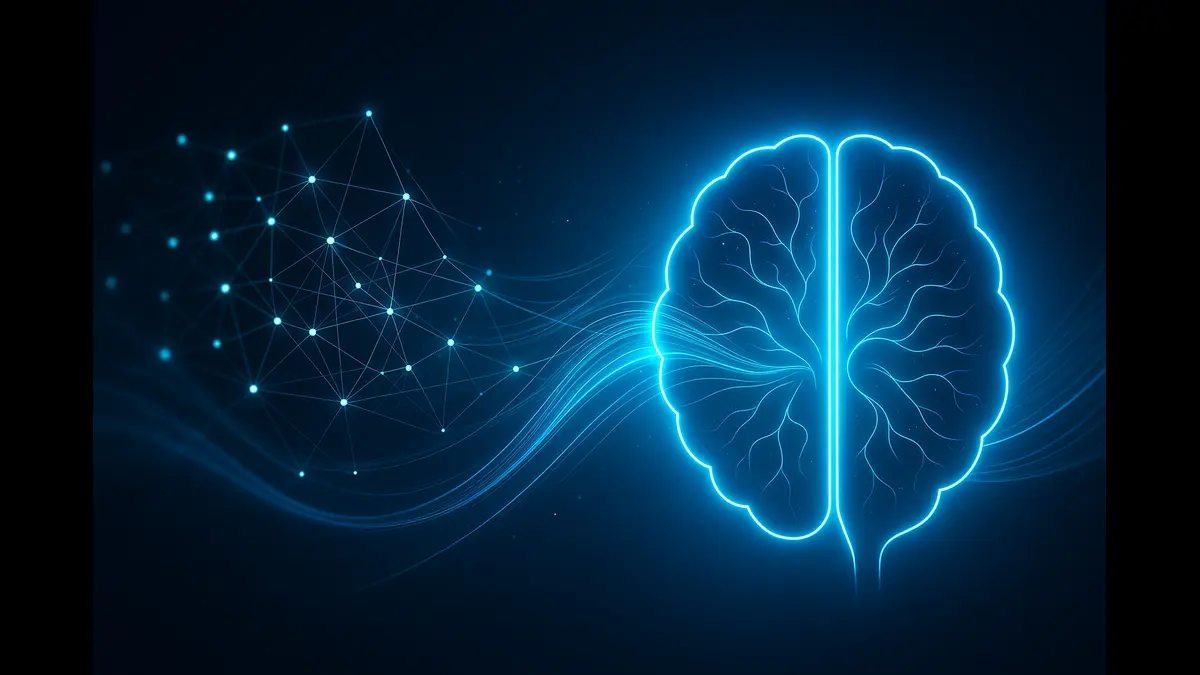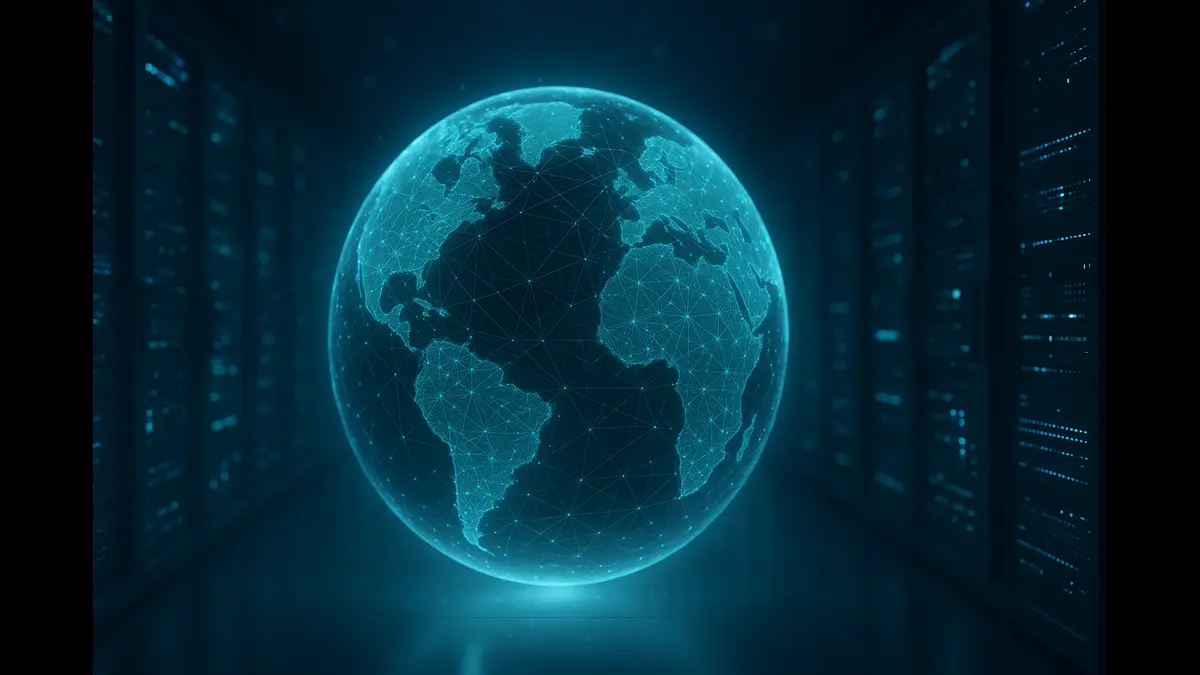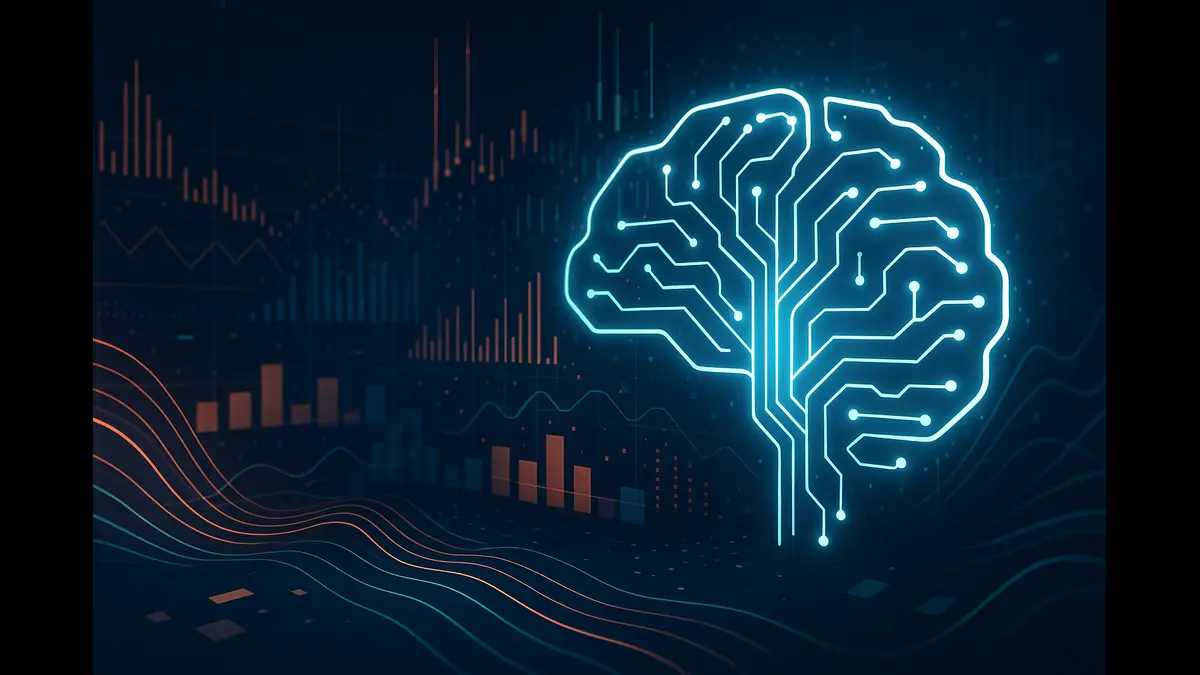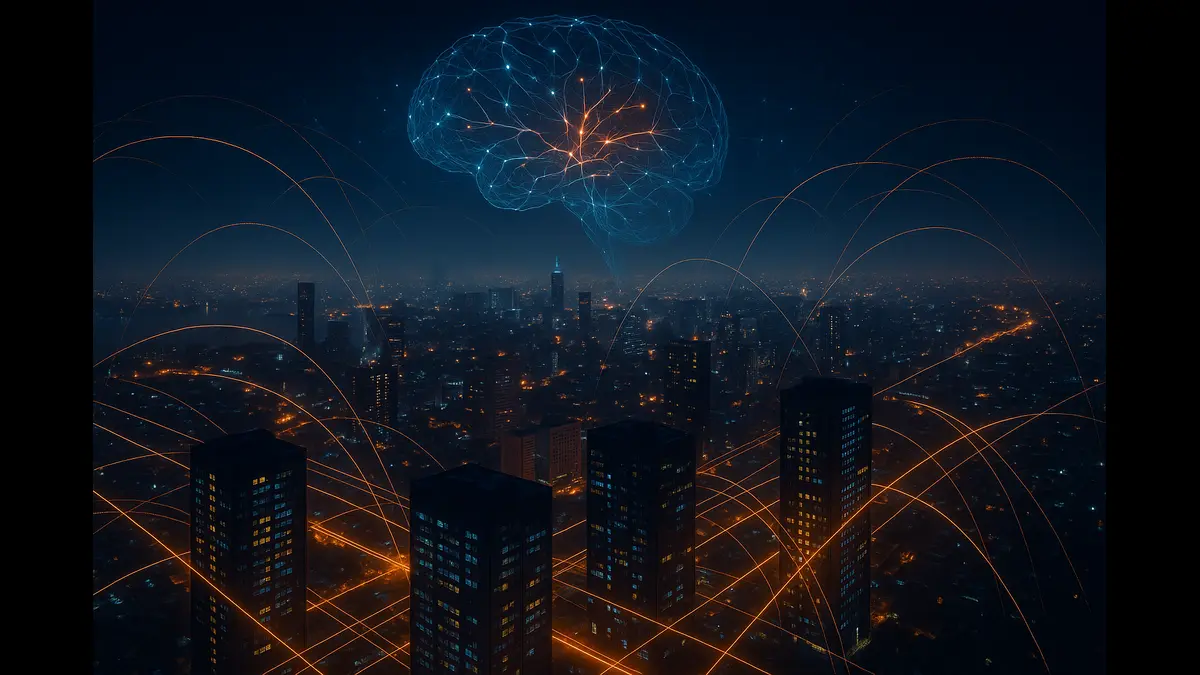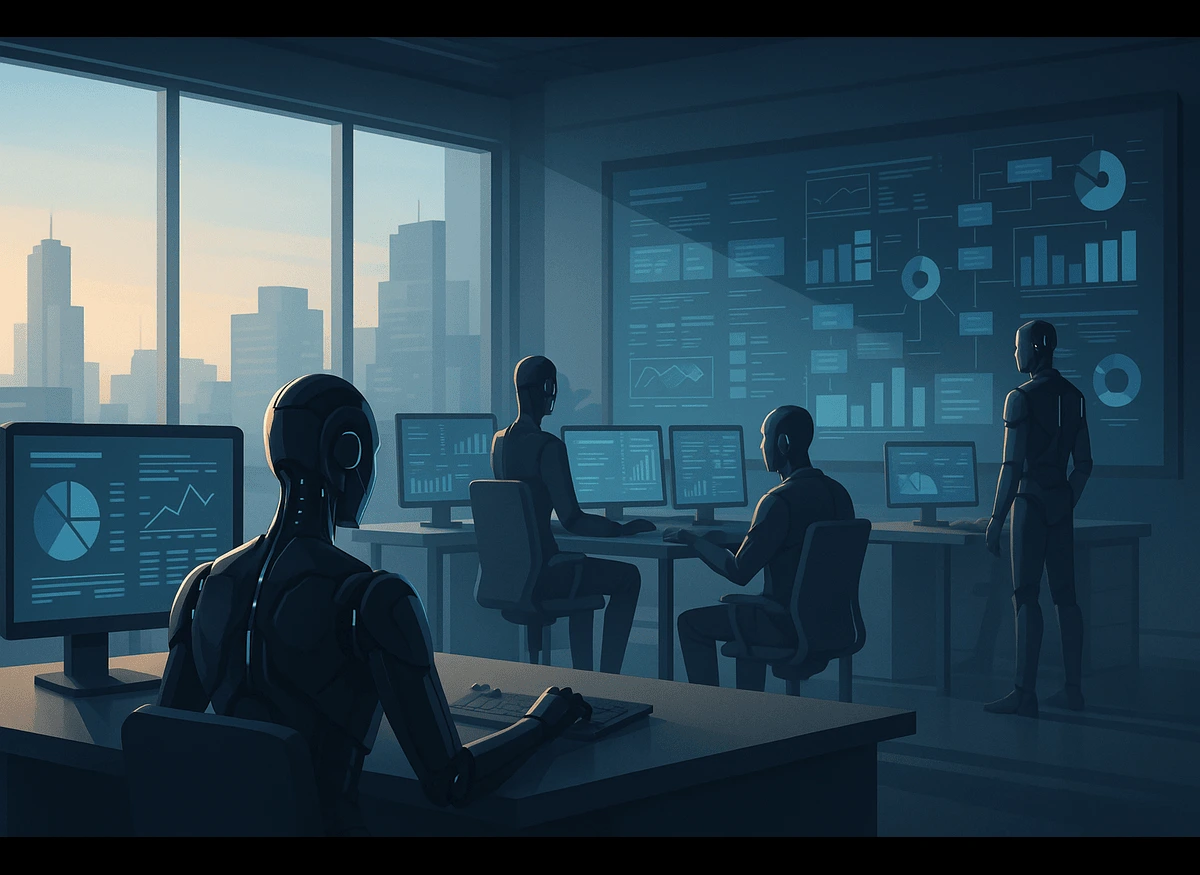
As we enter into the mid of 2025, a new digital workforce is taking shape inside global enterprises: autonomous AI agents. These intelligent systems aren’t just responding to commands—they’re making decisions, executing workflows, and collaborating across departments with minimal human input. Powered by large language models, real-time data, and multi-agent coordination, AI agents are now transforming core business operations across industries.
In 2025, autonomous AI agents are redefining enterprise operations, moving beyond simple automation to orchestrate complex workflows with minimal human intervention. These systems, built on advanced large language models (LLMs) and integrated with real-time data pipelines, are transforming industries from logistics to finance. By leveraging multi-agent architectures, enterprises are achieving unprecedented efficiency and scalability. This article dissects the technical underpinnings of AI agents, their real-world applications, and their impact on global enterprises, grounded in verified data and current deployments.
Defining AI Agents: Technical Foundations
AI agents are software entities that combine LLMs with reasoning, planning, and execution capabilities. Unlike traditional generative AI, which responds to prompts with static outputs, AI agents operate autonomously within defined parameters. They utilize function-calling APIs, persistent memory, and external tool integration (e.g., CRMs, ERPs, or databases) to execute multi-step tasks. For instance, an agent might query a database, analyze results, generate a report, and schedule its delivery—all in a single workflow.
The core of an AI agent’s architecture is its ability to decompose tasks into subtasks, reason about dependencies, and act iteratively. This is enabled by frameworks like LangChain or Microsoft’s Azure AI Foundry, which provide modular components for tool integration and state management. Agents often operate within a multi-agent system (MAS), where specialized agents—data retrievers, planners, or executors—collaborate via a shared communication protocol, typically JSON-based messaging over APIs. Deloitte reports that 25% of enterprises deploying generative AI in 2025 are using such agentic systems, with the global market for AI agents valued at $7.28 billion, projected to reach $41.32 billion by 2030 (41.48% CAGR).
Technical Implementation in Enterprises
AI agents are deployed across enterprise functions, leveraging real-time data pipelines and cloud-native infrastructure. In customer service, Salesforce’s Agentforce platform exemplifies this. Built on the Salesforce Data Cloud, Agentforce integrates with enterprise systems to handle 32,000 customer interactions weekly, resolving 83% autonomously. Its architecture uses a combination of LLMs (e.g., GPT-based models) and rule-based guardrails to ensure compliance and accuracy. For instance, an agent retrieves customer data via GraphQL APIs, processes it through a reasoning layer, and triggers actions like ticket creation or email responses, all within milliseconds.
In manufacturing, AI agents are optimizing supply chains and predictive maintenance. Siemens and Tesla employ agents that integrate IoT sensor data with cloud platforms like AWS IoT Core. These agents process time-series data using machine learning models (e.g., LSTMs for anomaly detection), predict equipment failures, and schedule maintenance via RESTful APIs. This reduces downtime by up to 30%, according to Siemens’ internal metrics. The agents operate in a feedback loop, continuously refining predictions based on new sensor data ingested through Kafka-based streaming pipelines.
Financial institutions like JPMorgan Chase use AI agents for portfolio management. These agents pull real-time market data via WebSocket APIs, apply reinforcement learning to optimize asset allocation, and execute trades within milliseconds. Retail giants like Walmart leverage agents for inventory optimization, using graph-based algorithms to predict demand and adjust stock levels across distributed warehouses. Gartner estimates that by 2028, 15% of operational decisions in some sectors could be fully autonomous, driven by these agentic systems.
Multi-Agent Systems: Collaborative Intelligence
The rise of multi-agent systems (MAS) is a game-changer. In an MAS, each agent specializes in a role—data retrieval, task planning, or execution—and communicates via standardized protocols. For example, Microsoft’s Copilot Agents, integrated into the 365 suite, use a microservices architecture where one agent queries SharePoint via Graph API, another generates insights using a fine-tuned LLM, and a third schedules tasks in Outlook. This modular design ensures scalability and fault tolerance, with agents running on Kubernetes clusters for high availability.
A typical MAS workflow might look like this: a customer query hits a service desk, triggering a retrieval agent to pull relevant data from a PostgreSQL database. A planning agent then decomposes the query into subtasks (e.g., verify account, draft response), assigning them to executor agents. These agents use REST APIs to interact with external systems, logging actions in a centralized audit trail for compliance. Accenture notes that MAS can “orchestrate entire business processes,” reducing human involvement in repetitive tasks by 50%.
Real-World Metrics: Efficiency and Accuracy
The impact is measurable. Atera’s AI agents, used in IT service management, reduce ticket resolution time by a factor of 10, saving 11-13 hours weekly per team. This is achieved through automated triaging, where agents parse unstructured ticket data using natural language processing (NLP) and route issues to appropriate systems via API calls. In customer service, Elisa’s AI agent Annika autonomously handled 560,000 interactions in 2024, leveraging a hybrid cloud architecture to scale across millions of customers.
Accuracy is another win. By integrating with trusted data sources (e.g., Snowflake, Salesforce Data Cloud), agents minimize errors from outdated or siloed data. For example, in healthcare, AI agents at Mayo Clinic process patient records via HL7-compliant APIs, ensuring compliance with HIPAA while automating appointment scheduling. BCG’s AI Radar survey shows that enterprises using agentic AI report 2.5x revenue growth in automated functions, driven by improved decision-making and reduced error rates.
Challenges: Data, Security, and Skills
Deploying AI agents isn’t without hurdles. Data quality is critical—agents require structured, real-time data to function effectively. McKinsey notes that 60% of enterprise data remains unstructured (e.g., emails, PDFs), necessitating platforms like Databricks for preprocessing. Security is another concern; agents accessing sensitive systems must comply with standards like SOC 2 or GDPR. This requires encrypted API endpoints and robust access controls, often implemented via OAuth 2.0.
Workforce readiness is a bottleneck. Only 33% of companies have trained a quarter of their staff to work with AI agents, per BCG. Without upskilling, employees struggle to oversee agentic systems, leading to resistance or mistrust. A LangChain survey highlights performance quality as the top concern, with 45.8% of professionals prioritizing reliability over cost, especially in smaller firms.
Governance and Human Oversight
AI agents thrive under human-on-the-loop supervision, where humans set strategic goals and monitor outcomes. Salesforce’s Agentforce, for instance, uses configurable guardrails to define when agents escalate to humans, ensuring accountability. IBM emphasizes governance frameworks to prevent misuse, such as limiting agent access to sensitive data via role-based access control (RBAC). This balance maintains trust while allowing agents to handle repetitive tasks.
The Road Ahead: Scalable Autonomy
In 2025, AI agents are not just tools but integral components of enterprise architectures. Their ability to operate in multi-agent systems, integrate with real-time data pipelines, and execute complex workflows is driving a paradigm shift. From reducing IT ticket resolution times to optimizing global supply chains, agents are proving their worth. However, success depends on robust data infrastructure, secure integrations, and a workforce trained to collaborate with these systems.
Enterprises should start with pilot projects, leveraging platforms like Google’s Agent Builder or Microsoft’s Azure AI for scalability and compliance. Vendor selection is critical—avoid solutions that overpromise autonomy without proven reasoning capabilities. With the right approach, AI agents will redefine efficiency, letting humans focus on strategy and innovation while digital teams handle the heavy lifting.
Sources: Deloitte Global 2025 Predictions, Salesforce Agentforce metrics, Accenture AI Insights, BCG AI Radar, LangChain survey, McKinsey Global AI Survey, Atera IT metrics.
Discover more from Poniak Times
Subscribe to get the latest posts sent to your email.

